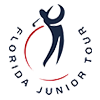Here’s a simple question … which golf course is more difficult?
Course A: 72.8/114
Course B: 67.8/127
Easy … at every single handicap level, the answer is Course A! Surprised? Many, if not most players probably would have guessed Course B. It just goes to illustrate the many myths and misunderstandings that still abound regarding the subject of Slope.
Myth No. 1 – Slope is the primary indicator of difficulty or, to put it another way, the higher the Slope, the more difficult the course.
Wrong! As the above example confirms, it is the Course Rating and not the Slope, which is the more dominant factor in defining course difficulty.
As each score a golfer posts is broken down into a numerical value known as a “differential,” it is the Course Rating that plays the more important role in the calculation (Adjusted Score minus Course Rating multiplied by 113 divided by Slope Rating). Slope merely bumps the number arrived at from the Course Rating up or down to arrive at a differential.
To put the Course Rating vs. Slope debate into perspective, it takes more than 20 units of Slope to have the same impact as a single stroke of Course Rating for a 5-handicapper. As a golfer’s handicap level increases, this ratio of the importance of the two values changes, but even for a 20-handicapper it takes 5 – 6 units of Slope to have the same impact as one stroke in the Course Rating.
Myth No. 1a – Two courses with the same Slope are of equal difficulty.
Wrong! A course with a rating of 71.5/125 is about two strokes more difficult than a course with a rating of 69.6/125 at every handicap level.
Myth No. 2 – Slope ratings can he compared between courses.
Wrong! I wish I had a dollar for every letter, E-mail or phone call I have received criticizing existing ratings on the basis of the Slope only. In short there is nothing more dangerous than trying to draw any sort of meaningful conclusions by comparing Slope Ratings from one course to another.
So what is Slope?
Slope merely tells you how “proportionately” more difficult that particular set of tees plays for the higher handicapped golfers as opposed to lower handicapped golfers. The more difficult the tees play proportionately for the higher handicappers, the greater the Slope rating that will be issued.
That’s it! Slope doesn’t tell you how the course proportionately plays from any other set of tees, let alone tell you how it compares with other courses. This proportionate difficulty is measured via a Course Rating process that evaluates each hole and each shot through the eyes of both a Scratch golfer and Bogey golfer. This process is so thorough that an actual rating for the Bogey golfer is computed and it is the gap between the Scratch and Bogey rating that determines the Slope.
For example, a set of tees may be issued a Course or Scratch rating of 70.5 and a Bogey rating of 94.3. What this means is that if a Scratch golfer were to complete 20 rounds from this set of tees, we expect his 10 best scores to average around 70.5. If a golfer with a Handicap Index of 20.0 were to complete 20 rounds, we would expect his ten best scores to average around 94.3. Based upon this gap of 23.8 strokes between the two ratings (94.3 – 70.5 = 23.8), a Men’s Slope Rating of 128 would be issued (gap times 5.381 for men).
The Scratch and Bogey ratings are both somewhat volatile and when a series of factors or obstacles on a course tend to gang up on only one of the two golfers, curious things can happen to the Slope.
For example, if a set of tees has a high number of holes in which the Bogey golfer can reach the green in “regulation,” an upward pressure on the Slope will be exerted. Think about it … on most of these holes the Bogey golfer is approaching the green with a long iron or fairway wood, while the Scratch golfer has a wedge or less in his/her hands. Clearly the Bogey golfer is much more susceptible to any of the greenside trouble present on the holes (bunkers, difficult chips, etc.). . . the kind of trouble that can cause his/her scores to soar. Such a scenario will force the Bogey rating higher, widen the gap between the two ratings, and result in a higher Slope.
Now consider a set of tees, even on the same course, where most of the holes are unreachable in regulation for the Bogey golfer. Now it is the Scratch golfer who has the longer approach shots, perhaps with mid to long irons, while the Bogey golfer may merely be chipping/pitching to the green in one over regulation. To a certain degree, the tide of proportionate difficulty has turned. Though both ratings will be increasing due to the added length of these tees, the gap between the Scratch and Bogey rating may be staying relatively constant or may widen at a very slow rate.
These upward and downward pressures help explain why a Slope rating may increase sharply at a course from the Gold tees to the White tees (Bogey rating rising much faster than Scratch rating as the approach shots become longer), yet hardly change from White to Blue (gap increasing slowly due to shorter approach shots of Bogey golfer). It also explains how a shorter course can be issued a Slope rating that may “feel” a little high, or how a longer course may be issued a Slope rating that may “feel” a little low.
Another factor that can greatly impact the Slope is forced lay-ups. If the Scratch golfer is forced to lay up on a hole due to any one of a number of obstacles (water hazard, severe dogleg, etc.), this will increase the Scratch rating. That’s because of the extra yardage of the approach shot. It will leave the Bogey rating untouched. This higher Scratch rating narrows the gap with the Bogey rating and decreases the Slope. Conversely, if the forced lay-ups only impact the higher handicapper, the Bogey rating and Slope will increase.
As you can see, there is much, much more that goes into the development of a Slope than meets the eye and besides, the Slope rating may not be nearly as important as you thought it was.





